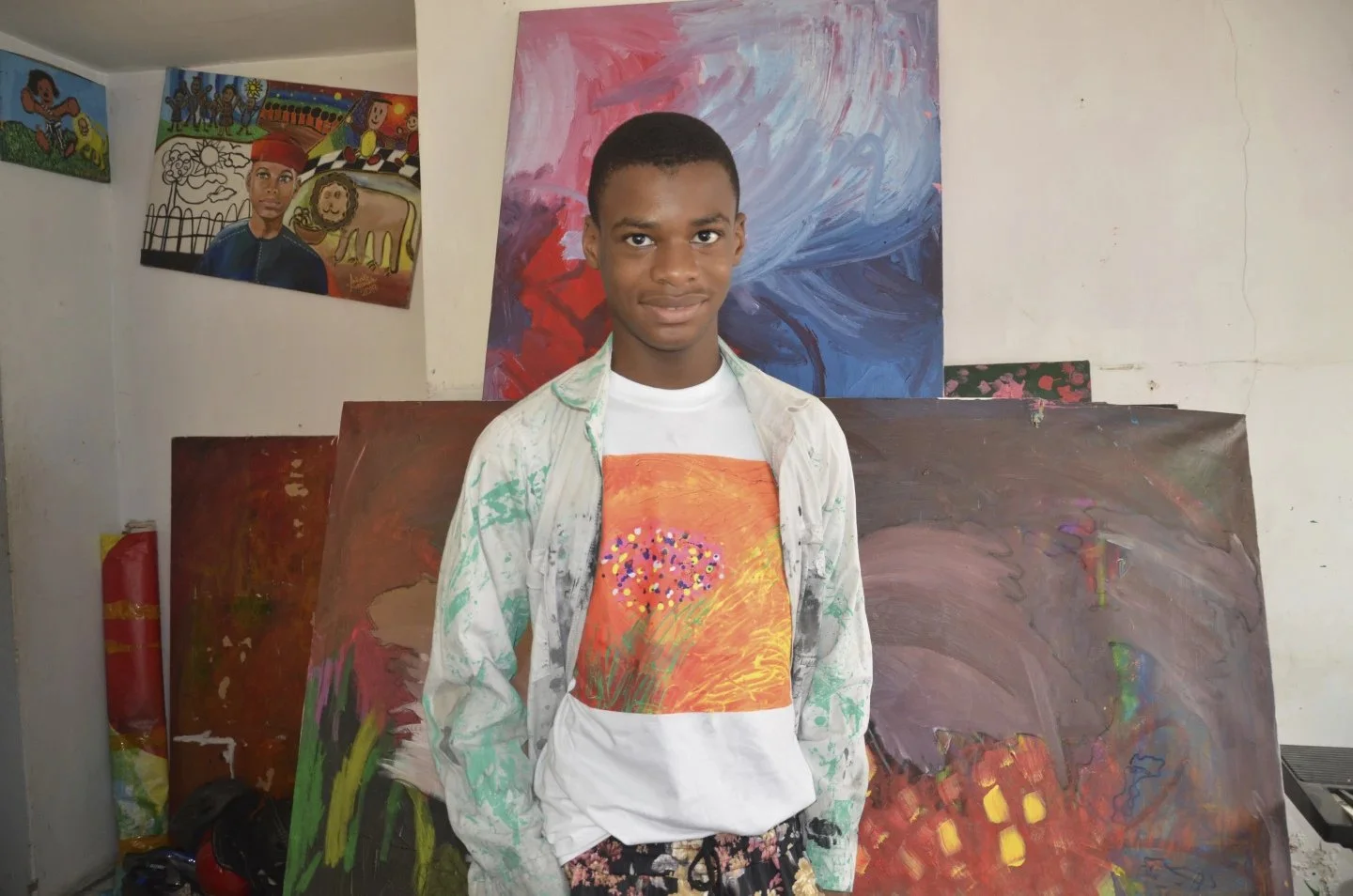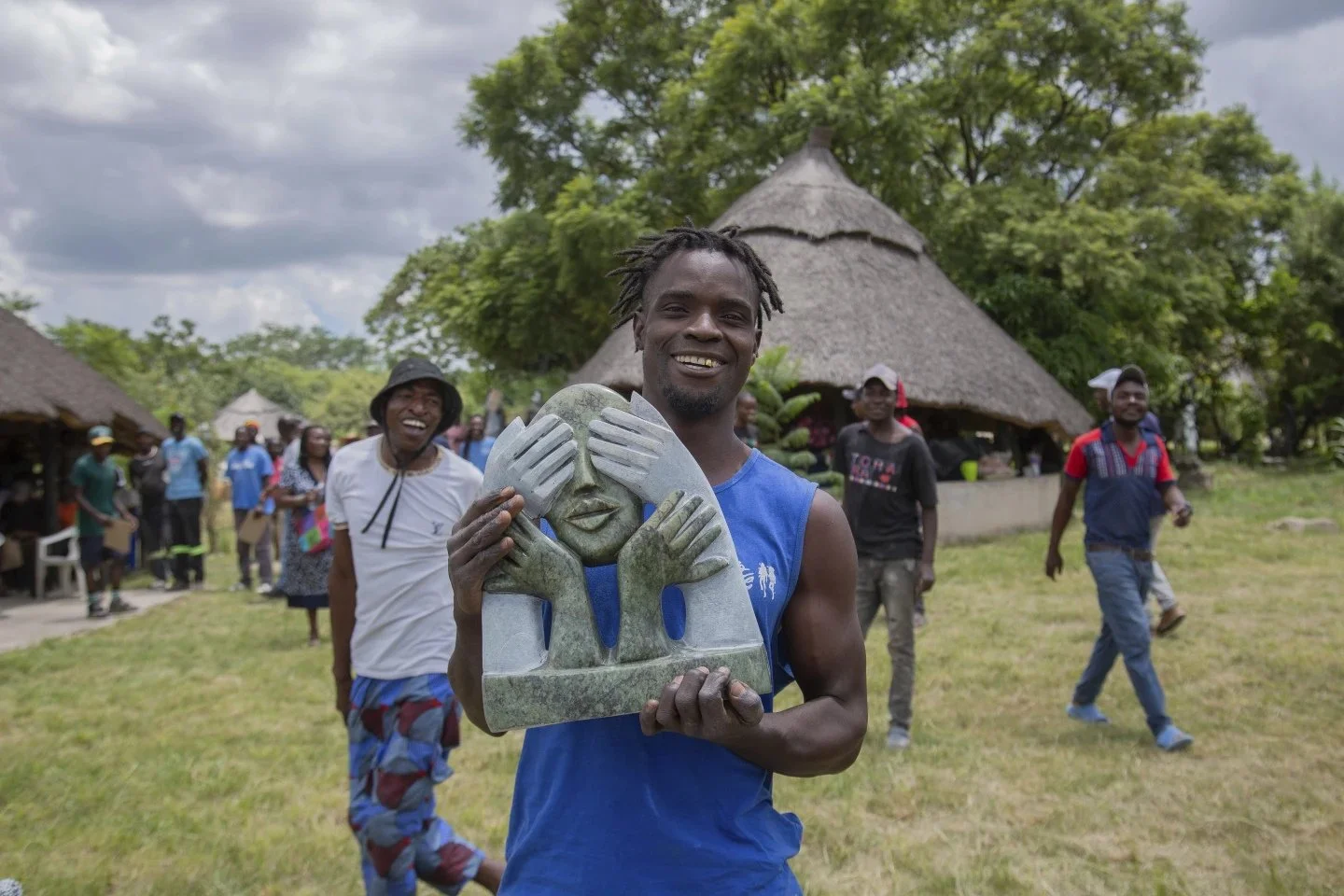Zelaki Newsletter | May 2025, Edition I
Threads of Change: Art, Culture, and Innovation Across Africa
In this edition of the Zelaki Newsletter, we explore how African artists and creatives are using their work to challenge perceptions, raise awareness, and make a lasting impact. From Kanyeyachukwu Tagbo-Okeke’s Guinness World Record artwork for autism awareness to Zimbabwean stone sculptors confronting colonial legacies at Oxford, we highlight the power of art to spark dialogue and drive change.
We also dive into the Herds puppet project, which travels from Kinshasa to the Arctic Circle, raising climate awareness through recycled material puppets, and celebrate Togo’s debut pavilion at the 2025 Venice Architecture Biennale, showcasing the country's architectural heritage and innovation.
Join us as we spotlight these inspiring stories of creativity, activism, and cultural preservation.
News from Africa And Beyond
Nigerian Teen Breaks World Record with Monumental Autism Awareness Artwork
Fifteen-year-old Nigerian artist Kanyeyachukwu Tagbo-Okeke has made international headlines by setting a new Guinness World Record for creating the largest art canvas ever documented. His work, titled Impossibility is a Myth, spans a staggering 12,304 square meters and was unveiled in Abuja to mark World Autism Acceptance Day.
The artwork features a vibrant, multicolored ribbon that symbolizes autism awareness, surrounded by a series of expressive emojis that reflect emotion, communication, and inclusivity. It is not only a striking visual piece but also a deeply personal project. Tagbo-Okeke, who is on the autism spectrum himself, created the canvas to raise awareness and spark greater public understanding of autism in Nigeria. In a country where diagnosis and support for neurodivergent individuals remain limited, this act of artistic advocacy carries significant weight.
The initiative was carried out in partnership with the Zeebah Foundation, a Nigerian organization dedicated to supporting children and families affected by autism. Through this collaboration, the project aimed to emphasize the importance of early intervention, education, and inclusive support systems. During the unveiling, representatives from the Guinness World Records officially recognized the achievement, describing it as both an artistic milestone and a powerful statement on inclusion.
By turning personal experience into a massive public message, Tagbo-Okeke has brought new energy to conversations around autism in Africa. His accomplishment is a reminder of how creative expression can not only break records but also build bridges of understanding across communities.
Zimbabwean Stone Sculptors Confront Colonial Legacies at Oxford Exhibition
A new exhibition at Oxford University is drawing global attention to Zimbabwean stone sculptors who are using their art to challenge colonial narratives. Featuring artists from the Chitungwiza Arts Center near Harare, the show presents politically resonant sculptures that reflect on the impact of British colonial rule, including forced labor, cultural suppression, and the legacy of imperialism.
Central to the exhibition is a response to British imperialist Cecil John Rhodes, whose role in southern African history remains controversial. Sculptor Wallace Mkanka’s striking piece of a blindfolded figure symbolizes the indoctrination of colonized peoples and was chosen as the top submission among over 110 entries.
The event is part of the Oxford Zimbabwe Arts Partnership, a cultural initiative that aims to restore visibility to Zimbabwe’s once-thriving stone carving tradition. The artists hope this international platform will revitalize interest in their work at a time when local art markets and tourism have declined.
Set against the backdrop of the Rhodes Must Fall movement, the exhibition brings contemporary Zimbabwean voices into ongoing global conversations about colonial history and cultural restitution. It underscores how art can serve as a means of resistance, healing, and historical reflection.
“The Herds” Puppet Project Brings Climate Awareness from Africa to the Arctic
A unique public art project called The Herds is traveling 20,000 kilometers from Kinshasa in the Democratic Republic of Congo to the Arctic Circle, using large animal puppets made from recycled materials to raise awareness about climate change and displacement. Created by the Ukwanda Puppetry and Designs Art Collective from South Africa, the project aims to engage audiences in conversations about the global impact of environmental crises, particularly in Africa.
The project is led by The Walk Productions, known for the Little Amal refugee puppet. Like Little Amal, The Herds uses performance and sculpture to communicate urgent issues. The puppet animals, such as elephants and lions, are crafted from discarded plastic and fabric, emphasizing sustainability. In each city along the journey, the project collaborates with local artists to stage public performances, incorporating song, drumming, and storytelling from the local culture.
In Lagos, Nigeria, more than 5,000 people gathered to watch the puppets, which were followed by discussions about climate change. The project will continue its journey to the Arctic Circle, connecting the Global South and North in a shared message about the climate emergency.
Togo's First Pavilion at the Venice Architecture Biennale 2025
Togo will present its inaugural pavilion at the Venice Architecture Biennale in 2025, offering a curated exploration of the country’s architectural heritage.
The pavilion, titled “Considering Togo’s Architectural Heritage,” aims to highlight the unique and diverse architecture of Togo through the lens of both historical traditions and contemporary design practices. This marks a significant moment for the country, as it enters the international architectural scene with a rich narrative of its built environment.
Curated by Studio NEiDA, an architecture and research practice founded by architect Jeanne Autran-Edorh and curator Fabiola Büchele, the pavilion will feature an in-depth investigation of Togo’s evolving architectural identity. Through the exhibition, visitors will explore how local materials, indigenous building techniques, and cultural practices have shaped the country's architecture over the centuries.
The exhibition will not only celebrate Togo’s past but also emphasize the innovative ways contemporary architects are addressing issues such as sustainability, climate resilience, and community-driven design. A key focus will be on the enduring relevance of traditional architecture and how it can inform modern solutions to current challenges faced by African nations, particularly in urban planning and environmental adaptation.
Togo’s debut at the Biennale is a significant milestone for African representation in global architectural conversations. It provides an opportunity for the international community to engage with Togo’s architectural heritage, recognizing it as a rich source of inspiration for future design practices. By participating, Togo joins the ranks of nations contributing to the global dialogue on the preservation of cultural heritage and the role of architecture in addressing social and environmental issues.




